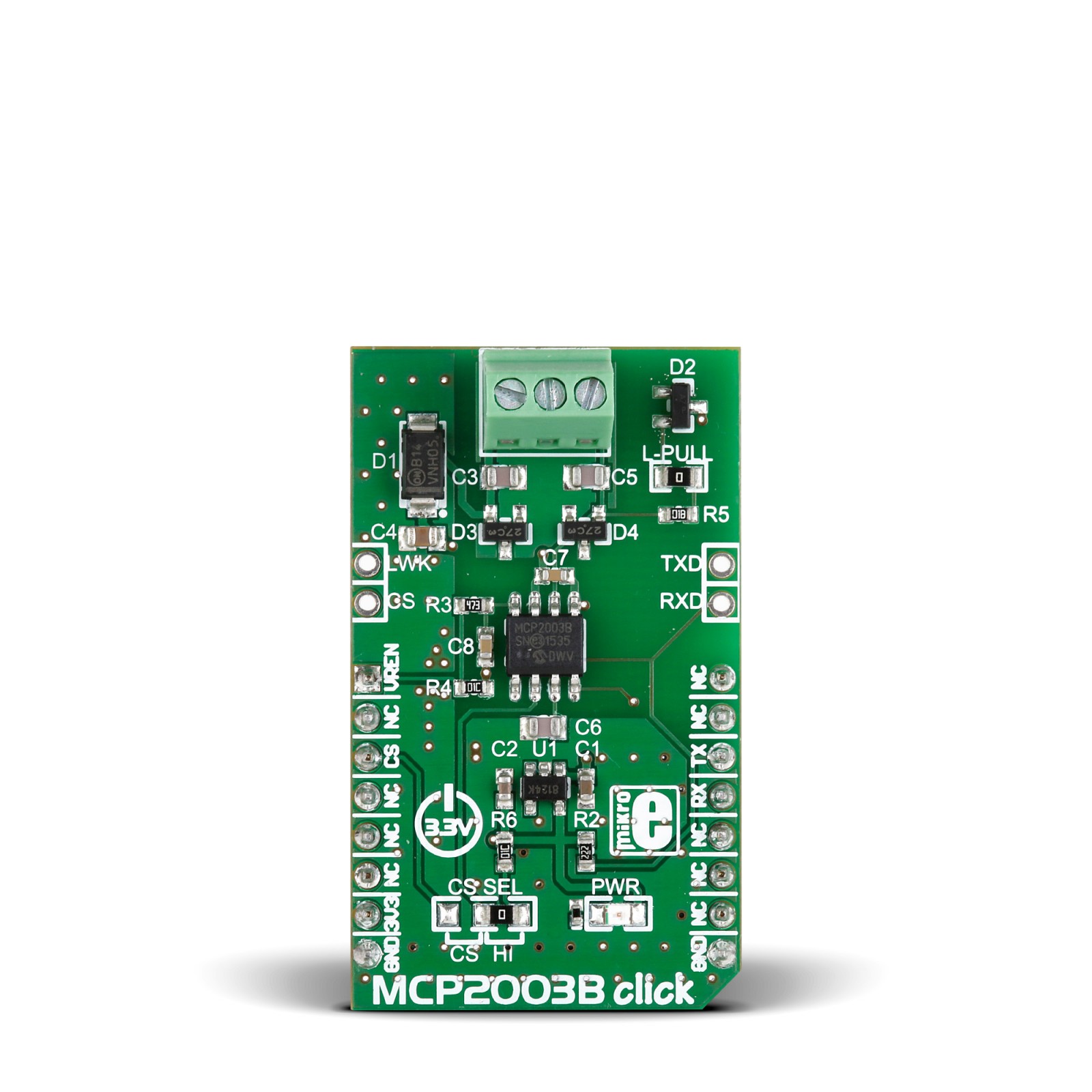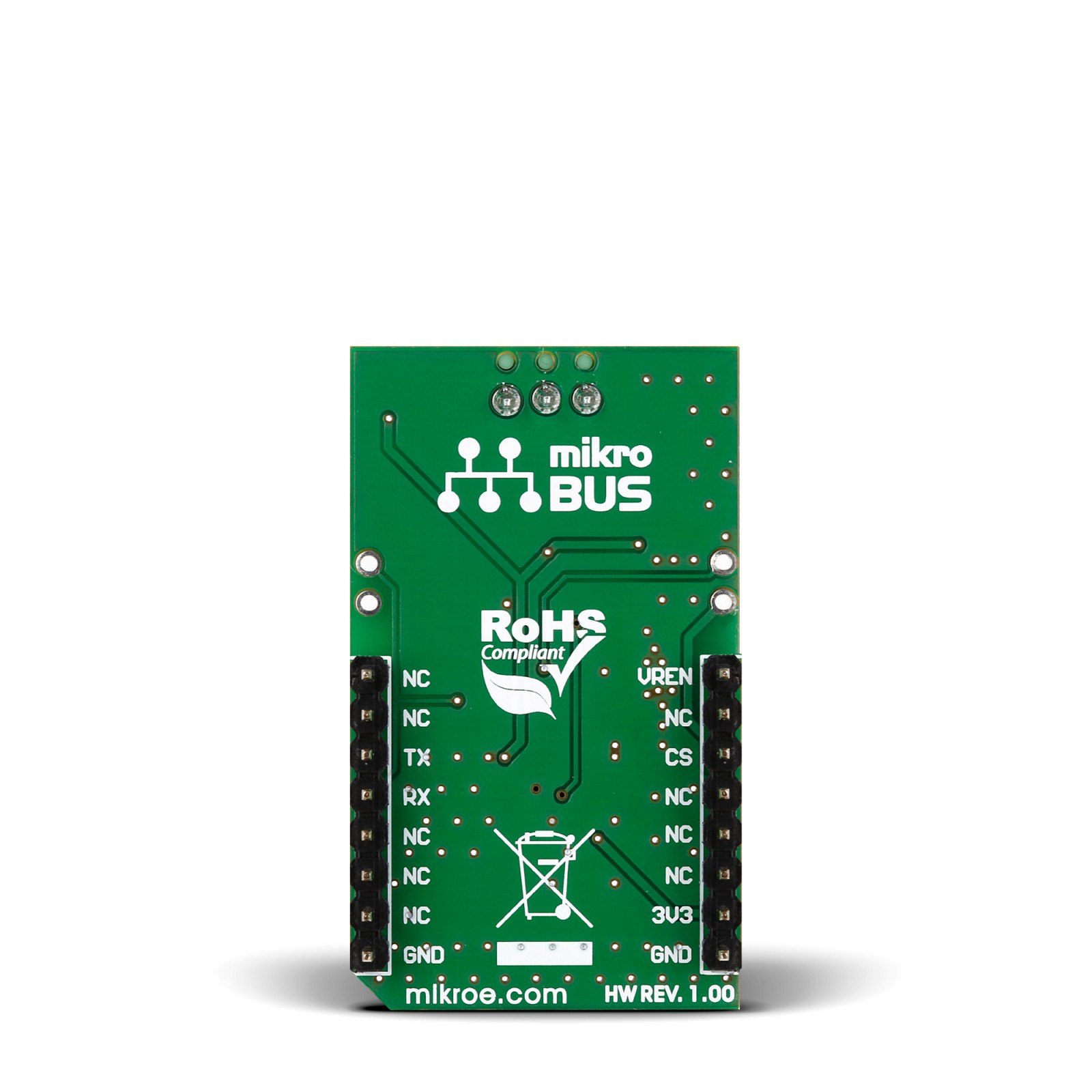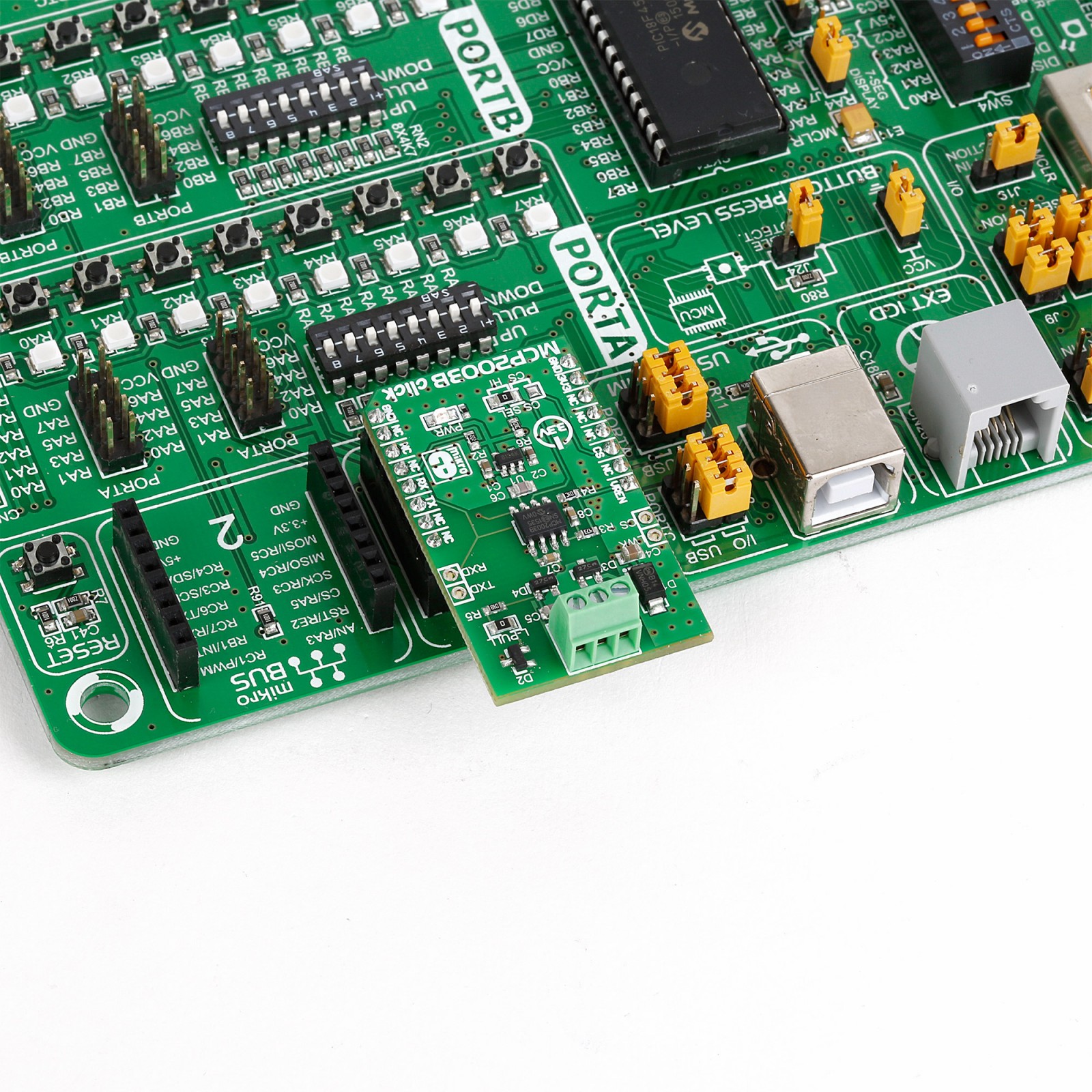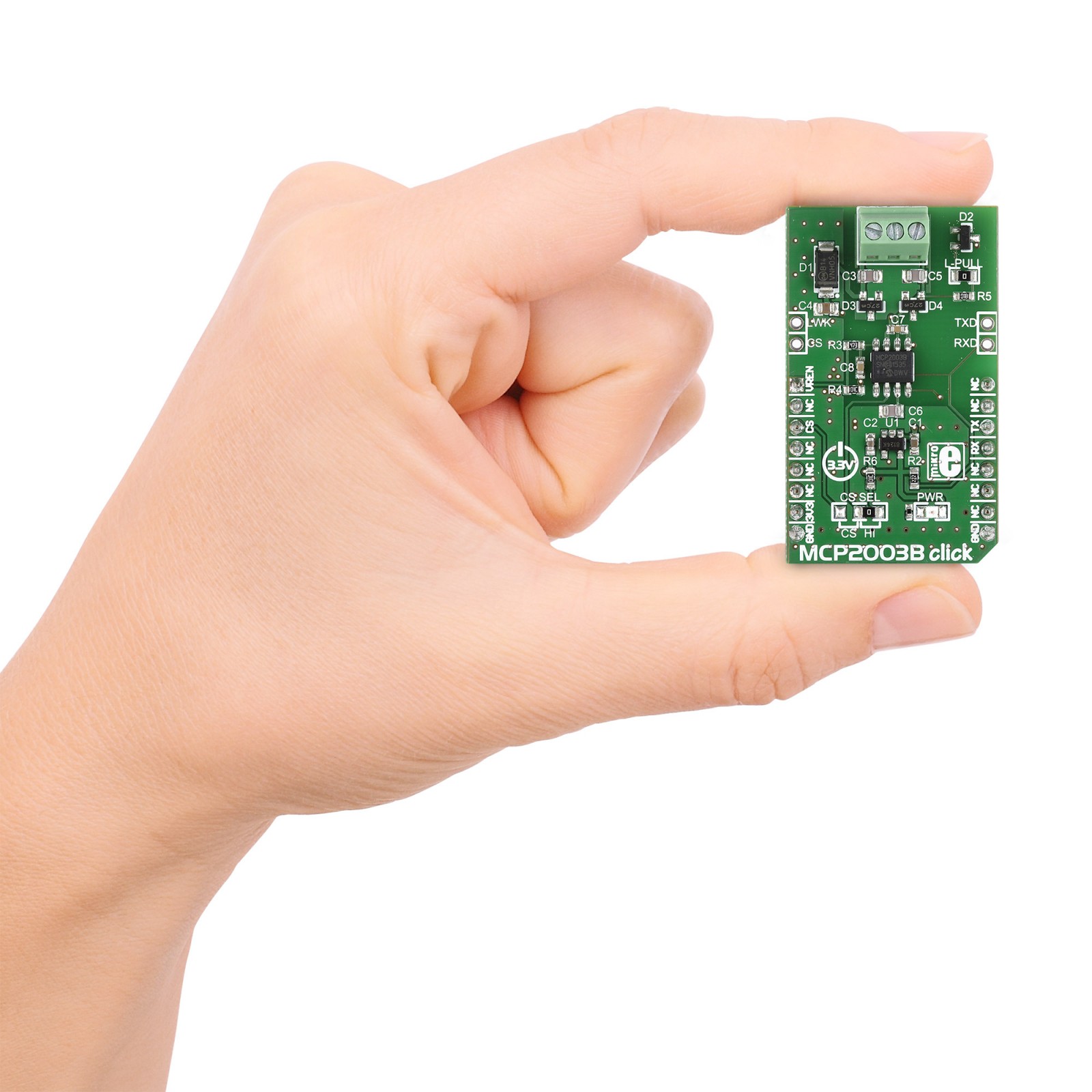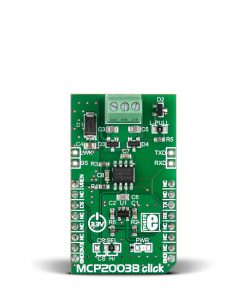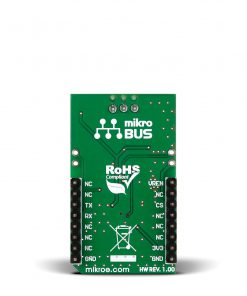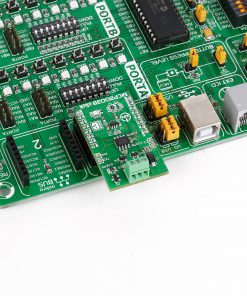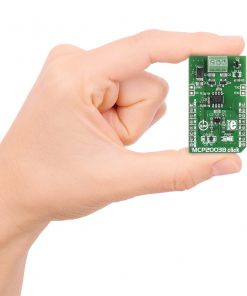MCP2003B Click is a compact add-on board with a physical interface to automotive and industrial LIN systems compliant with the LIN Bus Specification Revision 2.2, SAE J2602, and ISO 17987. This board features the MCP2003B, a LIN transceiver from Microchip. The LIN, which stands for a Local Interconnect Network, is used in conjunction with the CAN interface for communication between the components inside of vehicles. The MCP2003B is a bi-directional half-duplex LIN transceiver that supports baud rates up to 20Kbaud with a LIN-compatible output driver. According to the standard on which this LIN transceiver works, connecting up to 15 peripheral devices to a single controller device is possible. This Click board™ makes the perfect solution for the development of sensor networks for vehicles.
MCP2003B Click is supported by a mikroSDK compliant library, which includes functions that simplify software development. This Click board™ comes as a fully tested product, ready to be used on a system equipped with the mikroBUS™ socket.
 GPS Click
1 × R1,050.00
GPS Click
1 × R1,050.00  ADC Click
1 × R540.00
ADC Click
1 × R540.00  METHANE Click
1 × R335.00
METHANE Click
1 × R335.00  EXPAND Click
1 × R260.00
EXPAND Click
1 × R260.00 
